The 4th European Rural Parliament took place in the rural, green north of Spain, in the coastal village of Candás (Asturias) from 6th to 9th November 2019. Alistair Adam Hernández participated and his report is presented below.
I attended the ERP as LDnet representative and was kindly invited to join the German delegation. The choice of venue seemed deliberate, as attendees realised that the Principality of Asturias should be regarded as one of Europe’s most progressive Regions when it comes to implementing rural development policies. For example, in a relatively small territory, the Asturian Government supports 11 LEADER LAGs with approximately 30 percent of the funds devoted to the Rural Development Programme (RDP), a budget of approximately €9 million per LAG for the period 2014-2020.
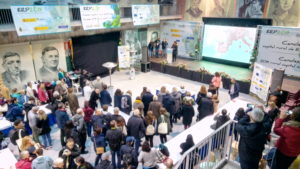
This 4th ERP was attended by many young people who had already arrived in Candás on 4th November to participate in their own ERYP where they presented a Manifesto including demands specifically for youngsters. In total, more than 335 delegates from 40 countries made the 4th ERP a fantastic opportunity for networking and updating. The commitment and passion of the delegates for their countryside and people could be sensed throughout the speeches, workshops and informal conversations.
What is the European Rural Parliament? The ERP is a partnership initiative comprising national, rural NGOs in 40 European countries and 6 European rural networks. The ERP gathering brings together all of these partners every 2 years, to debate rural issues and policy. Read more about ERP here.
Thursday 7th November – Welcoming, field trips and reception dinner
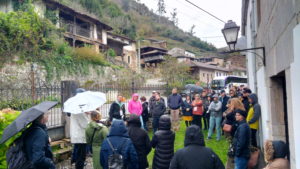
After the official welcoming of the delegates, everyone boarded one of seven buses arranged to take us to the different field trip areas of Asturias. The Asturian countryside is very diverse considering its manageable size. The hilly landscapes close to the coast, crossed by wide rivers (e.g. the Narcea, Sella, Nalón, …) and dotted by considerable industrial developments (steel mills, energy production plants, manufacturing, …) contrast strongly with the untouched and wild landscapes that exist higher up in the Cantabrian Mountains. In terms of natural resources, Asturias is a rich Spanish region: minerals, especially coalfields, but also watercourses of all kinds (energy and transport), excellent pastures for mountain and meadow cattle breeding, the coastal areas with their fabulous fish and seafood supply, not forgetting its splendid scenery so loved by visitors.
Delegates were able to soak up this information thanks to our (on our field trip Number 4, at least) well-prepared and very knowledgeable guide. We had the opportunity to discover the challenges of agriculture and landscape management in the presence of wolves and bears which roam the Asturian mountains. Also the importance of young entrepreneurs taking over vital basic services in the villages (eg: as a baker) or refurbishing the family manor for rural “boutique tourism”. Overall, interesting and visually impressive, especially in the area around Somiedo where the mountain tops already were white with snow. Anyhow, exercising constructive feedback and putting together what was said by other delegates, it is definitely necessary to keep a focus on “Why are we visiting this project or funding beneficiary?”, “What can we reflect on? What lessons can be learnt?” In the future, we should keep an eye on the thread connecting all the elements and include a collective discussion to wrap up the fieldtrips.
Friday 8th November – Inspirational inputs, thematic workshops and Networking
After the formal opening speeches in the historic Prendes Theatre, all delegates were able to listen to keynote speeches and inspirational presentations about rural communities regaining control of their resources and addressing the issues obstructing their sustainable development. Mr. Mihail Dumitru, Deputy Director-General at DG AGRI delivered a keynote speech on the “EU rural policy and rural communities. Future of Rural Development post 2020”. He stressed that rural Europe is key to addressing the existing climate crisis and that recently-elected President of the EU Commission, U. von der Leyen, has highlighted the importance of the European countryside in her published political guidelines. The Commission is also keen to allow more freedom and flexibility in the implementation of rural development programmes at all levels (member states, managing authorities and at local level) in the future.
A further presentation from Mr. Jaime Izquierdo Vallina, Commissioner for the Demographic Challenge of Asturias, reminded the audience about the loss of rural-urban links and relationships over the past 70 years. He pleaded for the reconstruction of agropolitan cities and metropolitan villages. You can read about his recent book with the same title and prologued by Yves Champetier here. A final presentation by Francesca Whitlock, Co-President of the European Network for Community-led Initiatives on Climate Change and Sustainability (ECOLIS) inspired the attending public as she reported on recent developments in Navarra, where the regional government has been paying close attention to the potential of ecovillages to repopulate remote rural areas whilst providing answers to the current climate crisis.

The afternoon offered participants the opportunity to get down to intensive discussions in small groups in more than 20 workshops devoted to topics ranging from smart villages to rural tourism. I had the pleasure of participating in workshops No. 2. (“Research and evidence-based advocacy in rural areas”) and No. 4. (“Urban-Rural Synergies”). Workshop Number 2 reached the conclusion that evidence-based policy and decision-making, from the point of view of most participants, still needs to be anchored in legislative processes at the highest EU and member-state levels. Furthermore, rural communities need to co-produce the science leading to the generally-accepted knowledge base as well as to benefit directly from the research carried out. Workshop Number 4 brought up wide-ranging discussions on how to re-connect rural and urban environments and especially between their inhabitants. Ideas such as including urban neighbourhoods in LEADER LAGs areas of benefit or investing in sophisticated media campaigns focussing on rural-urban links were proposed. The evening of 8th November offered more fantastic networking opportunities, as it gave the chance for in-depth conversations at the different stands of the Initiatives Market.
Saturday 9th November – Results, discussions and messages
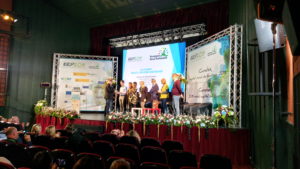
The last day of ERP 2019 was marked by frontal formats, especially plenary discussions and institutional presentations. “The Future of European Rural Policy” was discussed on stage among a MEP, a DGAgri representative, a CoR representative, a member of the EESC and the President of the Agricultural Rural Convention 2020 (ARC2020). Unfortunately, the audience was not presented with any fundamentally new messages beyond general references to “rural proofing”, “simplification” and the post-Brexit funding allocation for the first and second GAP pillars. The ERP Manifesto 2019 presented included 29 Paragraphs demanding more visibility and recognition of a wide range of rural issues and challenges that should concern the whole of Europe (final draft already online). The People’s Candás Declaration of 9th November 2019 also stresses the importance of making livelihoods in the countryside viable through adequate policies, programming and financing as well as encouraging collaboration at administrative, private and civil society levels. After the institutional closing speeches, the Candás Bagpipe Band provided a musical closure to three intense days of ERP 2019.
Personal conclusions
At the organisational level, once more, the organising team and people of Candás (especially volunteers) demonstrated a high level of performance during the preparation and execution of ERP 2019. Apart from the Spanish adherence to timetables (which did not cause any major upsets) everything else turned out really well. At the content level, I would wish to see more dynamic and unusual formats in future ERPs to stimulate discussions especially during the plenaries (e.g. fish bowl instead of plenary discussion) and offer unusual contributors (why not ordinary people with hands-on experience?) a more prominent role. In addition, it is clear that co-organising bodies will include the demands of the ERP in their upcoming two-year agenda, but it is not clear how other participating organisations and individuals can contribute to articulating rural Europe’s voice under the current ERP umbrella. This may be an opportunity to initiate something like sub or thematic groups related to specific topics (e.g. rural research and evidence-based advocacy). Lastly, at the relational level, the ERP has established itself as a major networking event in the context of European rural policy and development with an astonishing diversity of stakeholders involved. For many of us, combining a professional and advocacy approach to issues of rural development, the ERP has become an event where we can recharge our batteries meeting inspiring people, set up new collaborations and sense the winds of change blowing across rural Europe.
For more information on the ERP 2019 visit https://erp2019.eu. All final drafts of all documents can be found at the ERP official website https://europeanruralparliament.com/index.php/gatherings/erp-2019.
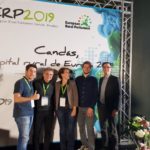
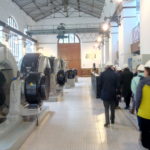


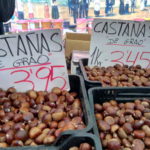
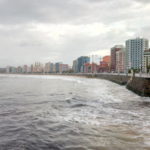
Leave a Reply
You must be logged in to post a comment.